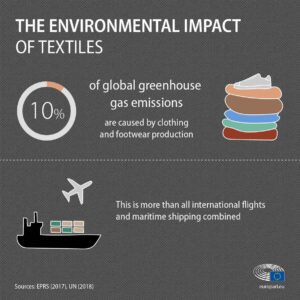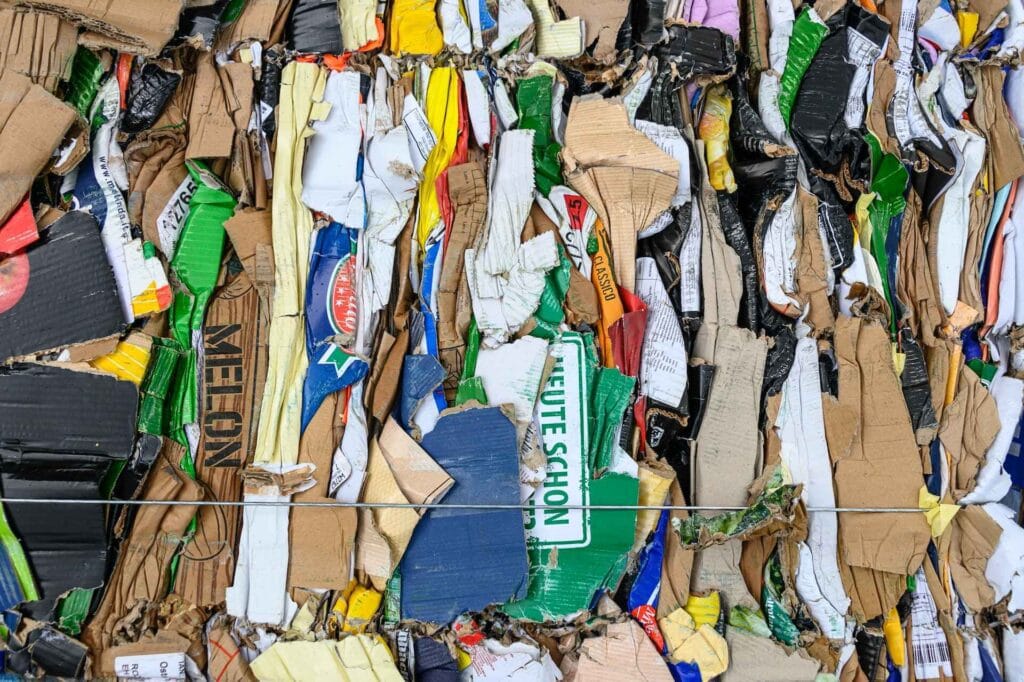Fabric pollution is a huge problem in the fashion industry, According to BBC report, the fashion industry is responsible for 10% of global carbon emissions, and around 20% of wastewater, in fact, the fashion industry utilizes more energy than both aviation and shipping industry combined and that’s a lot of energy specially in the current situation where there is a lot of power shortage in most of the countries.
The clothing brands usually produce apparels in bulk to fulfill the unpredicted demand of the customers as they don’t want you to wait longer for your clothing order, and by producing clothes in huge quantities they are able to deliver your order faster and minimize their production cost, cool isn’t?
But do you know that this facility comes at a massive cost of environmental loss? yes, you heard it right, let’s look at some facts about fashion industry waste.
Fabric pollution facts


- The fashion industry causes about 10% of global carbon emissions and nearly 20% of wastewater.
- The fashion industry consumes more energy than both aviation and shipping combined.
- According to the UN, a single pair of jeans requires 1 Kg of cotton. And to grow 1 Kg of cotton you need about 7,500–10,000 liters of water. That’s about 10 years’ worth of drinking water for one person.
- Around 70 million barrels of oil a year are used to make polyester fibers in our clothes.
- The U.S. throws away up to 11.3 million tons of textile waste each year—around 2,150 pieces of clothing each second!! (Bloomberg Report)
- Washing synthetics releases an estimated 0.5 million tonnes of microfibers into the ocean a year.
What Causes Fabric Pollution?

Both People and brands are responsible for fabric pollution, People love to buy and wear the latest fashion according to the world economic forum “On average, people bought 60% more garments in 2014 than they did in 2000.” most of the old clothes end up in a dump at the end of the year and because people don’t use a single piece of cloth for a long time instead they go with the latest fashion and trend.
Also washing your clothes sends 500k tonnes of plastic waste (microfibers) to the ocean which is very harmful to ocean life such as fish and other water living animals.
Some brands burn their old collections intentionally to maintain the scarcity and value of the brand, they never release the old collection to the local secondary markets at lower prices as they believe that it will reduce the value of their brand, Burning those collections releases a lot of carbon which contributes a lot in fabric pollution, it’s a disaster for the environment.
Best Way To Reduce Fabric Pollution

Fashion companies often use low quality materials to cut down their overall cost of production and release a new collection every week, Yes! not every season, every week which a lot of people love.
But think about all the causes we have just discussed don’t you think you need to make a sustainable choice when you buy clothes? I think Yes.
Try To Use Print On Demand Stores
Print on demand stores like Little Pillow produces a product only when a customer places an order it costs us a bit higher as we are not producing products in bulk but we can avoid all those sustainability problems and do not contribute to global pollution.
We also use a high quality fabric that is made from environment friendly materials to sustain for a long time so by choosing quality over quantity you are making a sustainable choice and contributing to reducing the global carbon emission.
Disadvantages Of Print On Demand
While it is a sustainable option to use print on demand stores for your appeal purchases there might be a slight delay in delivering your orders as they are started to produce as you order them so it takes a bit longer to fulfill your order, as we say: “patience always pays off” so be patient 🙂
How Little Pillow Is Contributing

At Little Pillow, we take the sustainability problem very seriously, we take the following measures to be a more sustainable and environment friendly brand.
Donation: All the customer returns and damaged products are donated to the local charities nearby our fulfillment center, Sometimes we let our customers do that honor and feel the joy of bringing a smile to the face of needy people.
Recycle: All the products which are not fit for donation are recycled by waste management service partners.
Reuse: Instead of printing only in the print safe area we print our design in the entire piece of fabric so we can use the fabric scraps to create other smaller products like Headbands they can be made easily with the fabric scraps and prevent it from going to landfill waste.
Efficient production: We use DTG (Direct To Garment) printing method to print our products as DTG is more sustainable than older apparel printing methods like screen printing. By using DTG we are able to reduce the use of water and energy hence reducing our carbon footprint.
Efficient Shipping: To reduce the carbon emission created by shipping and transportation our fulfillment partner is trying to build multiple warehouses all around the world so your order could be shipped from the nearest location to reduce the pollution created by the transport vehicles.
Conclusion & Wrap Up
At the end of this article, I just want to say that the fashion industry has a sustainability problem and the credit goes to both, Brands that continuously introduce new collections almost every month to increase their profits and we, the people who love to buy a new pair of clothes whenever our salary is credited to our account.
Can’t we just buy a good quality product once and use it for a little longer and we are done with it instead of throwing it away we can donate it to needy people if it is possible otherwise give it to the organizations who can handle the recycling and disposal process.
By doing these simple and effective steps we can make our world cleaner and more habitable for the next generation.

